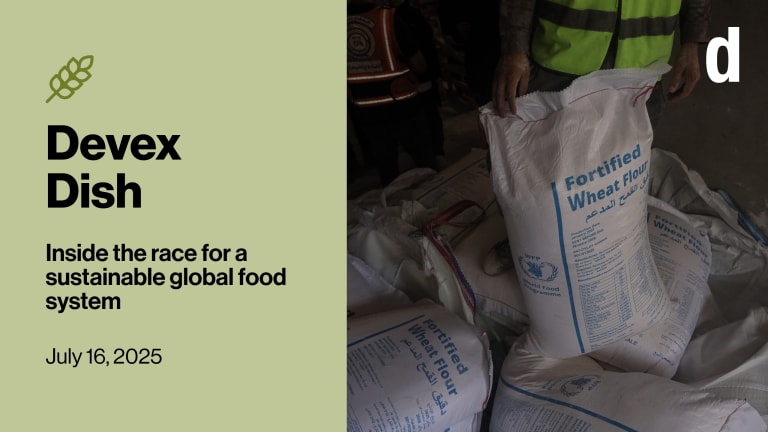
EDITOR’S NOTE: U.S. food aid reform runs the risk of getting so washed down by Congress that there will be barely any reform at all, writes Beth Schwanke, Senior Associate for Policy Outreach at the Center for Global Development.
The Obama administration’s fiscal year 2014 budget request included a food aid reform proposal that the administration estimated would allow U.S. food aid to reach an addition 2-4 million people per year — for roughly what the United States spends now. My colleagues Kim Elliott and Will McKitterick have a new brief out that argues this is a conservative estimate. Their calculations suggest that the reforms would help at least 4 million more people, and maybe as many as 10 million for the same amount of money as under the current inefficient system.
As Kim previously put it, the administration’s proposal is welcome but still only “half a loaf” of reform. The proposal would relax in-kind and cargo preference requirements on emergency aid, shift $250 million of non-emergency food aid into a new account without in-kind restrictions, and eliminate monetization. A good start. And as budgets shrink but need for and cost of food aid grows, any reform that allows U.S. food aid to reach more people for the same amount of money is not to be ignored. As Kim and Will point out, the number of direct recipients of U.S. food aid dropped from 74 million in 2006 to an average of 30 million per year over 2007-2010, despite more people in need.
But even the administration’s half reform appears to be too much in the face of strong pushback from maritime interests and some in the farm industry (Cargill is a notable exception in favor of reform, as is the National Farmers Union). And, perhaps most crucially, Agriculture authorizers and appropriators want to prevent this billion-dollar turf from moving out of their jurisdiction and to Foreign Affairs and State and Foreign Ops. This turf protection is more than self-interest — there is the possibility that moving these accounts to State and Foreign Ops makes these funds far easier to cut than if they remain under Agriculture’s accounts. Worrisome potential evidence of this line of argument can be found in the House’s recent 302(b) allocations, which would target the 150 Account with a cap of $34.1 billion for non-Overseas Contingency Operations funding, almost 14 percent below current, post-sequestration levels. Agriculture accounts, on the other hand, would not see significant cuts if the House’s caps were to stand.
The farm bills moving through both the House and Senate keep the food aid programs under Agriculture Committee jurisdiction. The Senate could provide a few crumbs of reform by making permanent a local-regional procurement pilot program and a Coons-Johanns amendment agreed to by voice vote on June 3 would increase the amount of money available in 2014-2018 for that program to $60 million from $40 million.
So, is food aid reform dead?
I’m not ready to call it quits just yet. House Foreign Affairs Committee chairman Ed Royce and Rep. Karen Bass have an ambitious reform bill out, which would end the in-kind and cargo preference requirements and eliminate monetization for most U.S. food aid. These reforms would more fully target the inefficiencies of the current system than the administration’s proposal and allow U.S. food aid to get to more people — and faster.
A champion for big reform in the Senate has yet to emerge but the optimist in me says that this kind of smart reform that eliminates enormous waste in the U.S. system is just calling out for a bipartisan push, even if not in the very near term.
Edited for style and republished with permission from the Center for Global Development. Read the original article.








